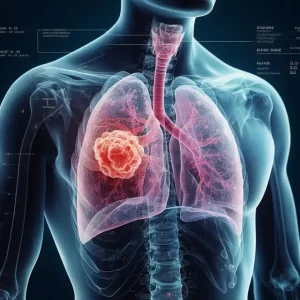Questions related to cervical cancer and how to protect the uterus
- EPA Announces First-Ever Regulation for “Forever Chemicals” in Drinking Water
- Kochi University pioneers outpatient bladder cancer treatment using semiconductor lasers
- ASPEN 2024: Nutritional Therapy Strategies for Cancer and Critically Ill Patients
- Which lung cancer patients can benefit from neoadjuvant immunotherapy?
- Heme Iron Absorption: Why Meat Matters for Women’s Iron Needs
- “Miracle Weight-loss Drug” Semaglutide Is Not Always Effective
Questions related to cervical cancer and how to protect the uterus
Questions related to cervical cancer and how to protect the uterus. Learn more about the health of the uterus and protect the uterus to avoid pathological changes.

01 What are the main functions of the uterus?
The uterus is the place where life is born. It is located in the deep part of the female pelvis, surrounded by the pelvis, and shaped like an upside-down pear. To put it simply, the uterus has two important functions: one is to “pass on the family line”, and the other is to provide women with a special experience once a month-producing menstruation.
02 How does menstruation “come”?
It can be said that menstruation is the result of pregnancy failure. If there is no fertilized egg to settle in the house of the uterus, when the endometrium thickens to a certain extent, it will fall off on time, allowing women to have menstruation.
03 What are the manifestations of menstruation to be careful?
We can use several indicators to judge whether menstruation is normal.
The first is the menstrual cycle, the average normal menstrual cycle is 28 days; the second is the duration of menstruation, usually from the “big aunt” to the final departure, if it is within 3 to 7 days, it is normal; the third is menstruation The amount is usually 20ml~60ml, with an average of 50ml. If it exceeds 80 ml, it means excessive menstrual flow, and if it is less than 20 ml, it means low menstrual flow.
Women may wish to preliminarily judge whether their “old friends” are normal from the three perspectives of menstrual cycle, menstrual period, and menstrual volume. In addition, if menstruation is always accompanied by pain, such as low back pain, chest pain, headache, abdominal pain, etc., pay attention to it and seek medical treatment in time.
04 What is endometriosis?
A woman’s endometrium is peeled off every month and is excreted from the body through the vagina with menstrual blood. However, some people’s endometrium “runs in the wrong place”, it will flow down the fallopian tube into the pelvic cavity, reach a position outside the uterine cavity, continue to root, grow and become sick, causing endometriosis.
What are the common symptoms of endometriosis? The first is dysmenorrhea. Dysmenorrhea is a typical manifestation of endometriosis. About 80% of patients will have dysmenorrhea or chronic pelvic pain, and some people will have pain during the same room. The second is that it may cause female infertility. ; The third is that it may cause pelvic masses, and cysts grow on the ovaries, also called chocolate cysts.
Endometriosis cannot be overcome with tolerance. If you have the above symptoms, be sure to see a doctor.
05 What should I do if I have uterine fibroids?
Uterine fibroids are the most common benign tumors in women. We can neither be left alone nor over-treatment, nor can we ignore it completely. When there are the following situations, it is recommended to “make a deal if you want to make a move”:
The first case is that uterine fibroids cause menstrual changes, which usually lead to increased menstrual flow or prolonged periods.
The second situation is that uterine fibroids cause uncoordinated uterine contractions, and then increase menstrual flow and even cause anemia. With the increase of uterine fibroids, thinner women may feel a lump in the abdomen. If the fibroids are very large, there will be a heaviness of “falling down”.
The third situation is more special, usually caused by submucosal uterine fibroids. Uterine fibroids are tumors that occur in the wall of the uterus and can grow in different directions. When it grows into the uterine cavity, it will form submucosal uterine fibroids, which will not only make the inner surface of the uterine cavity uneven, but also cause increased secretion and peristalsis in the uterine cavity. As the saying goes, “One mountain cannot accommodate two tigers”, submucosal uterine fibroids will try to “squeeze out” the embryos that come to settle, and it is easy for women to habitually abort after pregnancy.
If uterine fibroids cause the above symptoms, we need to intervene. As for whether to remove only the tumor or remove the fibroids together with the uterus, it needs to be considered comprehensively according to the patient’s age, fertility requirements, disease, and own state.
Remind everyone that although most of uterine fibroids are benign, there are a very small number of possible malignant changes, which often occur in older women. If fibroids are still growing after menopause, or fibroids have grown faster in the recent period, or even doubled in number, the possibility of uterine fibroids becoming sarcoma malignant must be considered.
06 How is cervical cancer caused?
The “culprit” of cervical cancer is very clear, namely human papillomavirus (HPV). On the earth we live in, human papillomaviruses are widespread. There are currently more than 200 known HPV viruses. There are 14 HPV viruses that can cause cervical cancer. Among them, there are two high-risk subtypes with super combat effectiveness— -HPV 16 and 18.
Cervical cancer is a preventable tumor. The first is to vaccinate for cervical cancer, and the second is to pay attention to the adjustment of lifestyle and behavior. If we can vaccinate the cervical cancer vaccine in advance and adopt a safe, healthy and responsible attitude and method when we are in “close contact” with the opposite sex, the “double swords” of these two measures can help us effectively prevent cervical cancer.
07 I have cervical cancer, can it be cured?
If detected early and timely, cervical cancer can actually be cured.
Below, I will briefly introduce the four stages of cervical cancer: In stage I cervical cancer, the lesions only grow on the cervix; when it continues to develop to the sides or downwards, it is stage II cervical cancer; It develops on both sides and downwards, and spreads further, reaching the side wall of the pelvis, which is stage III cervical cancer; if it continues to invade the bladder forward, invade the rectum backward, and involve the liver, lungs and other organs upward, it will reach stage IV cervical cancer. .
Generally, before stage IIa of cervical cancer, it is an early stage cervical cancer, and good results can be achieved through surgery, radiotherapy and chemotherapy. However, advanced cervical cancer is not only prone to recurrence, the treatment effect may also be unsatisfactory. This reminds us that for cervical cancer, we must take active preventive and screening measures to achieve early detection and early treatment.
08 What are the general signs of endometrial cancer?
Endometrial cancer is cancer that occurs in the lining of the uterus. We just mentioned that the endometrium will peel off, grow, peel off, and grow again every month. In the process of constant metabolism and repair, it may also “make mistakes”. When it develops to the extreme, it is in the uterus. Membrane cancer.
A more obvious signal of endometrial cancer is postmenopausal bleeding or abnormal uterine bleeding. Specifically, if a woman has vaginal bleeding after 1 year of menopause, she must be vigilant and highly suspected of endometrial cancer; in addition, women aged around 40 should also have menstrual disorders. Beware of whether it is caused by endometrial cancer, it is best to go to the hospital for an ultrasound examination.
09 How should women take care of their uterus?
The first is to recommend that women undergo a gynecological examination once a year. A doctor can help you find out if there are problems with the cervix, uterus, and ovaries as early as possible.
The second is to do an ultrasound examination once a year, which is divided into abdominal B-ultrasound and vaginal B-ultrasound.
The third is the examination of tumor markers, such as CA-125, CA-199, CEA, and alpha-fetoprotein.
The fourth is to have cervical cancer screening every two years or so, and regular breast examinations.
Through the above measures, it can help female friends to better take care of their uterus, and be healthy and beautiful forever!
(source:internet, reference only)
Disclaimer of medicaltrend.org



